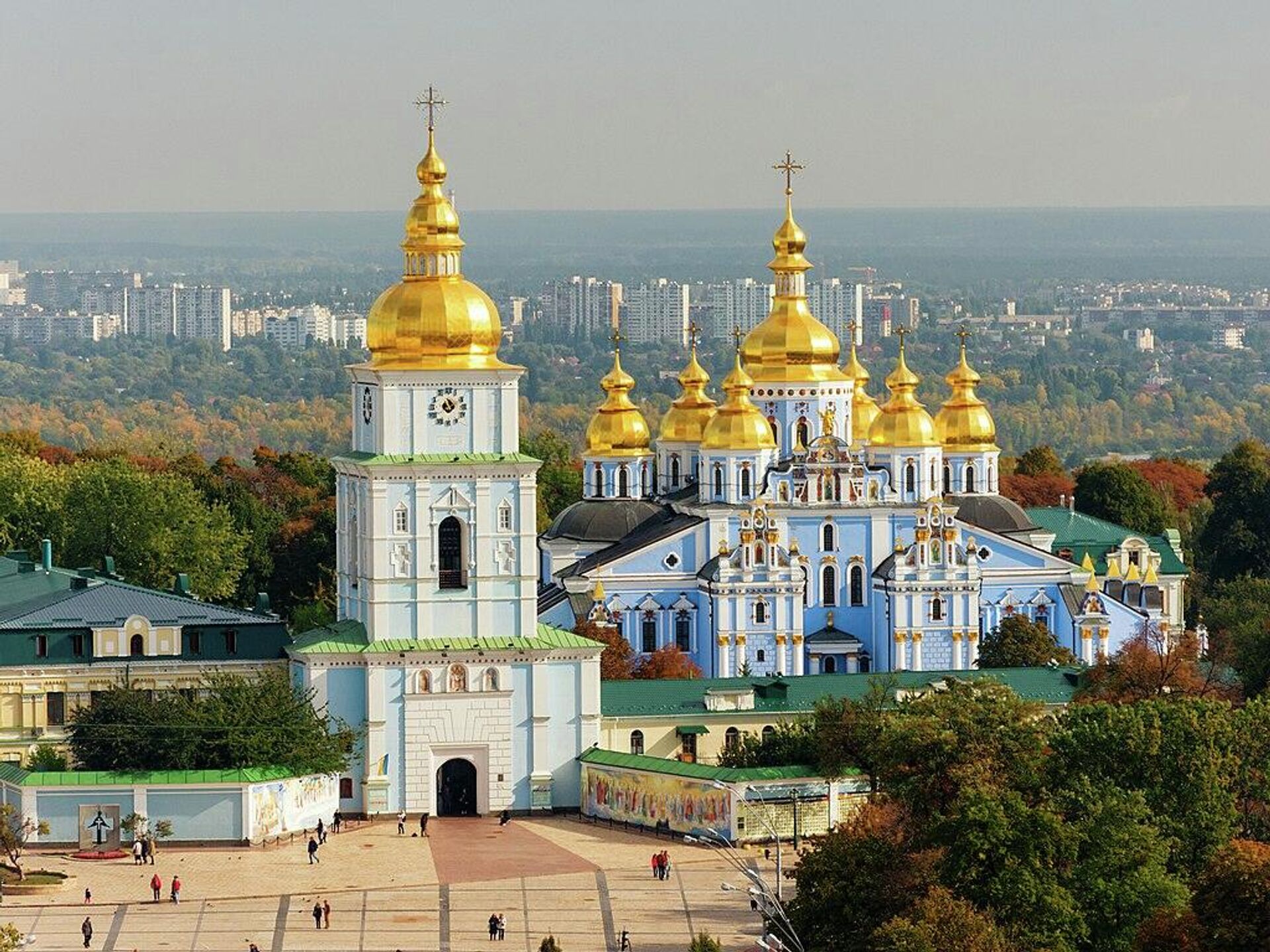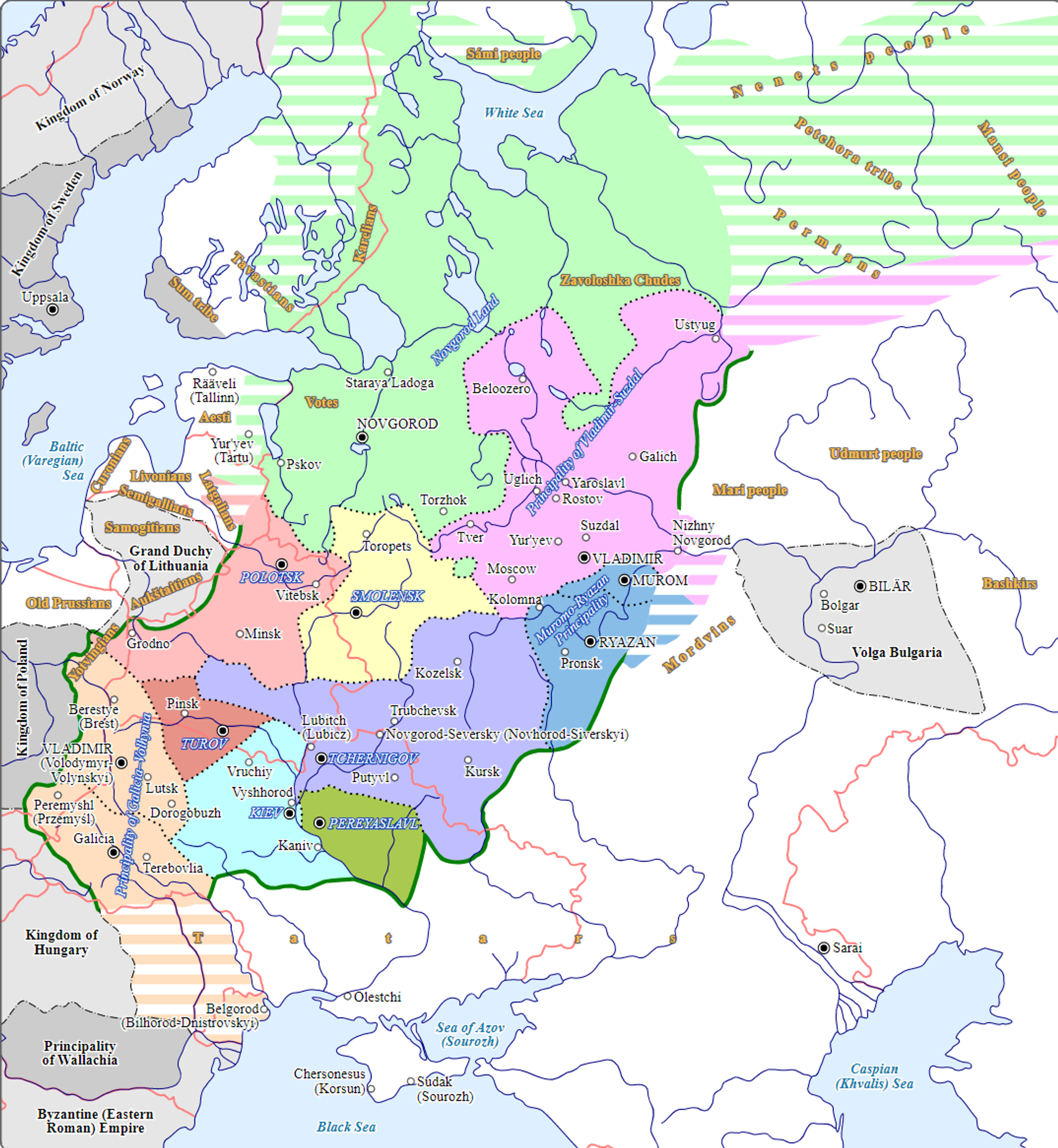Let’s Talk About the Kievan Rus, Who the US’ Kiev Embassy Memed About on Tuesday
22:12 GMT 22.02.2022 (Updated: 10:23 GMT 23.02.2022)
Subscribe
Kiev’s nickname may be the “Mother of Rus’ Cities” due to its ancient role as the cradle of Ukrainian, Russian and Belarusian civilization, but it’s Moscow that earned the moniker of The Third Rome. Both are part of a single proud history.
The US embassy in Ukraine - which is presently located in Lvov - tweeted a meme on Monday that highlighted the great age of Ukraine’s capital of Kiev as compared to Moscow. The post is intended to be a “one-up” on Russia following comments by Russian President Vladimir Putin about the historic unity of Russia and Ukraine, and how the Bolsheviks tried to sever that by forming Ukraine into a separate republic.
“Since time immemorial, the people living in the southwest of what has historically been Russian land have called themselves Russians and Orthodox Christians. This was the case before the 17th century, when a portion of this territory rejoined the Russian state, and after,” Putin said.

A tweet by the US embassy in Kiev on February 22, 2022, comparing Kiev's and Moscow's histories.
Indeed, the Dnieper valley served as a cradle of much of Russian cultural identity, including the foundation of the Russian Orthodox Church and the Old East Slavic language, the ancestor of the Ukrainian, Russian, Belarusian, and Rusyn languages.
However, there’s some fact and some fiction in attempting to reverse the order of things and claim that Ukrainian culture predates Russian culture.
Kiev and many of the other small states composed of Slavic tribes rose to their greatest prominence under the rule of the Rurikid princes, who were Norse or “Varangian” warlords from a people called the Rus’, who conquered their way down the rivers of Eastern Europe along which they had once traded. Rurik of Ladoga was the first, who was invited in 860 CE to rule over Novgorod as prince, along with his brothers Sineus in Beloozero (Belozersk) and Truvor in Izborsk.
When Rurik died, Prince Oleg, the regent for his young son Igor, led a military expedition down the Dnieper and in 882 conquered the city of Kiev, then ruled by a Jewish Turkic empire called the Khazars. Oleg proclaimed Kiev the “Mother of Rus’ Cities'' and made it his new capital. Oleg later laid siege to Constantinople, the capital of the Byzantine Empire, and while he failed to capture the metropolis, the attack raised the emperor’s awareness of the Rus’ and he sent missionaries to try and convert them to Orthodox Christianity.
Although Olga of Kiev, the empire’s first female ruler, converted to Orthodoxy during a visit to Constantinople in the 950s, it wasn’t until Volodymyr the Great converted in 998 and “baptized” the city of Kiev that Christianity took hold in the region. According to one legend, Volodymyr consulted with Christian, Jewish, and Muslim religious leaders about each of their faiths before making his decision, but ultimately rejected the latter two.
It was Volodymyr who ordered the construction of the Church of the Dormition of the Virgin in 996, which the US embassy’s tweet mentions. He may also have ordered construction of St. Sophia’s Cathedral in 1011, although it may also have been Yaroslav the Wise, who is said to have built the church to commemorate his victory over the Pechenegs, a nomadic Turkic people from the Pontic steppe, in what is today southern and eastern Ukraine.
Yaroslav’s grandson, Vsevolod I, established the Vydubychi Monastery in 1070, although it was partially reconstructed in the 17th century in the Ukrainian baroque style. Vsevolod’s successor, Sviatopolk II of Kiev, built St. Michael’s Golden-Domed Monastery in 1108, near St. Sophia’s Cathedral. It was demolished during the Soviet period, but rebuilt after the USSR’s dissolution in 1991, as were many halls of worship across the former USSR.
From Kiev, the Rurikids ruled a vast empire that stretched from the Black Sea in the south to the White Sea in the far north, and from the Carpathian mountains in the west to the Volga near modern-day Nizhniy Novgorod in the east. Although in reality, that “empire” was a loosely collected group of principalities that were beset by internal rivalries and strife.
By the time the Mongols mounted their all-out invasion of Eastern Europe in 1237, the Kievan Rus were a shadow of their former selves, and the Mongols conquered nearly all of the Rus’ states except Novgorod. The 1240 siege of Kiev devastated the city, with the Mongols burning most of the city and slaughtering or enslaving nearly all of its inhabitants.
Moscow’s first mention in the historic record was around 1147, and when the Mongols invaded 90 years later, it was still an insignificant trading outpost ruled by Vladimir-Suzdal. However, it soon fell under the rule of Alexander Nevsky, the infamous Prince of Novgorod, who used his friendly relationship with the Mongolian Golden Horde to win appointments as the Grand Prince of Vladimir and later even of Kiev.
Alexander’s son Daniel inherited Moscow, which enjoyed a unique political stability as other Rus’ principalities fell apart, and it grew wealthy and powerful after winning an important concession from the Golden Horde to be the sole collector of taxes from the other Rus’ principalities. By 1480, Moscow had assembled a kingdom strong enough to take on the Mongolian armies and win, and its de facto victory on the River Ugra, when the Mongols fled instead of trying to cross the river and end Moscovite defiance, meant Moscow would become the “gatherer” of the Russian lands” into a new and greater empire, as one historian has put it.
That “gatherer,” Grand Prince Ivan III, was the first to unofficially call himself Tsar (Caesar) after he married Sophia Palaiologina, the daughter of the last Byzantine emperor, whose empire had been destroyed by the Ottoman Empire. In 1492, the Metropolitan Patriarch of Moscow, Zosimus, declared Ivan "the new Tsar Constantine of the new city of Constantine - Moscow.”
The rest, as they say, is history.



